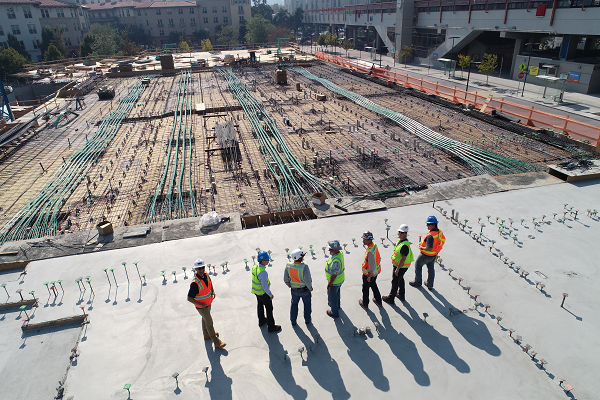In the world of construction, time is money, and efficient scheduling can make or break a project’s success. Traditional scheduling methods have long been the norm, relying on spreadsheets and charts to allocate resources and manage tasks on paper printouts. However, a simple but ground-breaking approach is reshaping the industry – Online Map-Based Scheduling for Construction. This innovative technique leverages the benefits of location-based planning to streamline processes, enhance communication, and ultimately, ensure project completion on time and within budget.

Benefits Beyond Measure: The Advantages of Location-Based Planning
- Improved Visual Communication: Traditional scheduling methods can be complex and hard to grasp, especially for non-technical stakeholders. Location-based planning simplifies this by offering a visual representation that is easily understood by all parties involved. This clarity improves communication, fosters collaboration, and reduces misunderstandings.
- Efficient Resource Allocation: Assigning tasks based on location enables efficient use of resources. Construction teams can optimize equipment deployment, reduce travel time between tasks, and ensure that the right resources are available at the right place and time.
- Real-time Updates and Adaptability: Construction sites are dynamic environments where changes are inevitable. Collaborative scheduling allows for real-time updates, enabling teams to adapt to unforeseen circumstances and keep the project on track. If a task is delayed or a new requirement arises, adjustments can be made on the map, and all stakeholders will instantly be aware of the changes.
- Conflict Prevention and Resolution: One of the most significant advantages of location-based planning is its ability to identify and prevent conflicts. Overlapping tasks or resource shortages are easily spotted on the map, allowing teams to resolve issues before they impact the project timeline. This proactive approach minimizes disruptions and ensures smoother project execution.
- Informed Decision-Making: The data generated by collaborative scheduling provides insights into progress, resource utilization, and task durations. Analysing this data helps project managers make informed decisions and identify areas for improvement.
Increased Efficiency and Cost Savings: With optimized resource allocation, reduced conflicts, and improved coordination, projects are completed faster and with fewer costly delays. This efficiency translates into cost savings for both the project owner and the construction team.

Embracing the Future of Construction Scheduling
In an era of digital transformation, the construction industry is not lagging behind. Location-based planning marks a paradigm shift that empowers construction professionals to work smarter, not harder. By visualizing the project on a map, optimizing resources, and mitigating conflicts, construction teams can overcome challenges with agility, leading to successful project delivery.
Zeitmaps offers an easy and free solution to get you started at this level of planning. Check out some other blogs of example projects or our Youtube channel to learn more.
If you want to learn more about location-based planning or Zeitmaps you can also be in touch with me in person: marcus.back@zeitmaps.com.
Good luck with your own planning!
Marcus Bäck
Do you want to try using Zeitmap in your own projects? First, click on the tutorial here to learn how to use the app through an easy demo and proceed to an example project. If you have any questions, feel free to contact us, we will be happy to help.